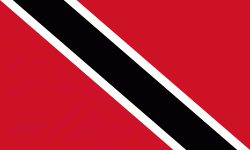Couva-Tabaquite-Talparo Regional Corporation (Couva-Tabaquite-Talparo)
Couva–Tabaquite–Talparo is bordered by the Gulf of Paria to the west, the Borough of Chaguanas to the north-west, Tunapuna–Piarco region to the north, Sangre Grande and Rio Claro–Mayaro to the east, Princes Town to the south and the City of San Fernando to the south-west. The region is directly adjacent to the Venezuelan state of Monagas to west separated by the Gulf of Paria.
Couva–Tabaquite–Talparo is Trinidad and Tobago's third largest region in area after Sangre Grande and Rio Claro–Mayaro. The region is situated in Central Trinidad within the Caroni Plains bordering the Gulf of Paria to west. It was a major region for sugar and cocoa production in the 18th and 19th centuries and the first half of the 20th century. The region features the Caroni–Arena Dam which supplies water to the northern regions of Trinidad and Navet Dam which supplies water to much of Central and Southern regions Trinidad. Much of the Central Range lies in the region which is home to the Brasso Venado and Gran Couva Waterfall. Couva–Tabaquite–Talparo also houses the Pointe-à-Pierre Wild Fowl Trust in Pointe-à-Pierre.
Map - Couva-Tabaquite-Talparo Regional Corporation (Couva-Tabaquite-Talparo)
Map
Country - Trinidad_and_Tobago
 |
 |
| Flag of Trinidad and Tobago | |
The island of Trinidad was inhabited for centuries by Indigenous peoples before becoming a colony in the Spanish Empire, following the arrival of Christopher Columbus, in 1498. Spanish governor José María Chacón surrendered the island to a British fleet under the command of Sir Ralph Abercromby in 1797. Trinidad and Tobago were ceded to Britain in 1802 under the Treaty of Amiens as separate states and unified in 1889. Trinidad and Tobago obtained independence in 1962, becoming a republic in 1976.
Currency / Language
| ISO | Currency | Symbol | Significant figures |
|---|---|---|---|
| TTD | Trinidad and Tobago dollar | $ | 2 |
| ISO | Language |
|---|---|
| ZH | Chinese language |
| EN | English language |
| FR | French language |
| ES | Spanish language |















